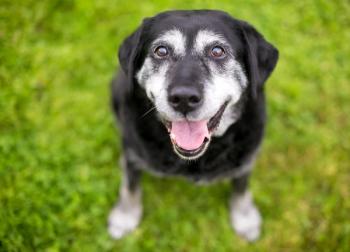
Emergency teams creates new canine decontamination guidelines
Texas A&M Veterinary Emergency developed the new protocols to help decontaminate dogs after disasters
Texas A&M School of Veterinary Medicine & Biomedical Sciences’ (VMBS) Veterinary Emergency Team (VET), the nation's largest emergency response team to specialize in veterinary care, announced the development of new decontaminating (decon) dog protocols after disaster events. For those treating pets in disasters, the key to avoiding lasting repercussions from chemical hazards is decontamination.
“Every kind of disaster, whether it’s a tornado or an explosion at an industrial facility, has its challenges,” said Debra Zoran, DVM, PhD, DACVIM, a professor in VMBS’ Department of Small Animal Clinical Sciences and the VET’s interim director, in an organizational release.1 “But one thing that most have in common is exposing people and animals to harmful substances that can cause health problems.
“They might just be skin irritants, or they could end up being cancer-causing agents. Even a natural disaster like a flood can end up spreading sewage water and all of the toxic things it contains throughout the environment for people and animals to encounter,” she continued.
VET is currently the only state-level veterinary medical care provider in the State of Texas Emergency Response Plan and they help pets all over the country. The team consists of faculty and staff at VMBA with a range of specialties and utilizes tents and trailer-based medical platforms when deployed.2
According to the organizational release, the guidelines will help disaster management teams in the United States better understand the kinds and qualities of resources needed to clean external contaminants off companion animals. Zoran and the VET team's new guidelines take an average of 10 to 15 minutes to decontaminate dogs through a streamlined system. They also created a washing station by using large plastic tubs and then drilling holes in the bottom of them. This allows the pets to be washed and the water to be drained out of the tub and into a larger
“We tested our system on medium-size dogs with medium-length coats and found that a line of volunteers can decon about 4 or 5 dogs an hour,” explained Zoran.1 “You’ll need about 12 to 15 gallons of water per dog and other equipment, like towels, hoses, and protective gear for the volunteers.”
Researchers also compared liquid dish soap that has oil-removing properties with antibacterial soap to see which lathers better. The results showed that while there are scenarios in which antibacterial soap is important, it doesn’t lather as well as the one with oil-based properties.1 To perform this comparison, the team applied Glo-Germ to the dog’s coat before bathing to simulate oil-based contaminates.
While the guidelines are based on data from well-behaved dogs that were used to bathing, the real-time decon time can vary in a real emergency. Zoran and the team hope that they can get more information about decon for a greater variety of dogs and potentially other pets such as cats.
“The more information that people have, the better prepared they can be in case of a disaster,” Zoran concluded.1 “You don’t want to wait until one happens to figure out what to do.”
The guidelines will soon be available in the journal Disaster Medicine and Public Health Preparedness.
References
- Texas A&M Veterinary Emergency Team develops new decontamination guidelines for dogs. News release. The Texas A&M School of Veterinary Medicine & Biomedical Sciences’.February 26, 2024. Accessed April 1, 2024.
https://vetmed.tamu.edu/news/press-releases/decontamination-guidelines-for-dogs/ - Response. Veterinary Emergency Team (VET). Accessed April 1, 2024. https://vetmed.tamu.edu/vet/response/
Newsletter
From exam room tips to practice management insights, get trusted veterinary news delivered straight to your inbox—subscribe to dvm360.






